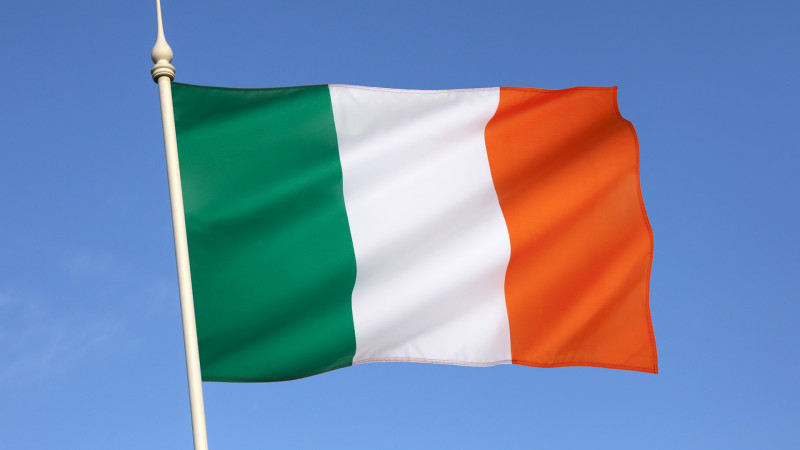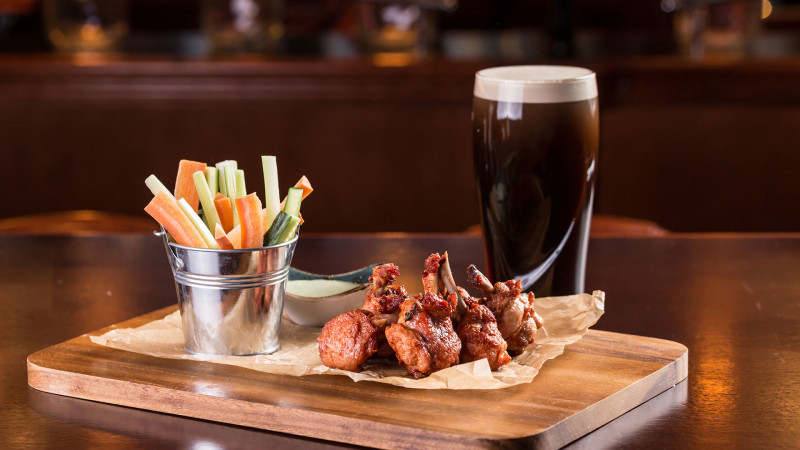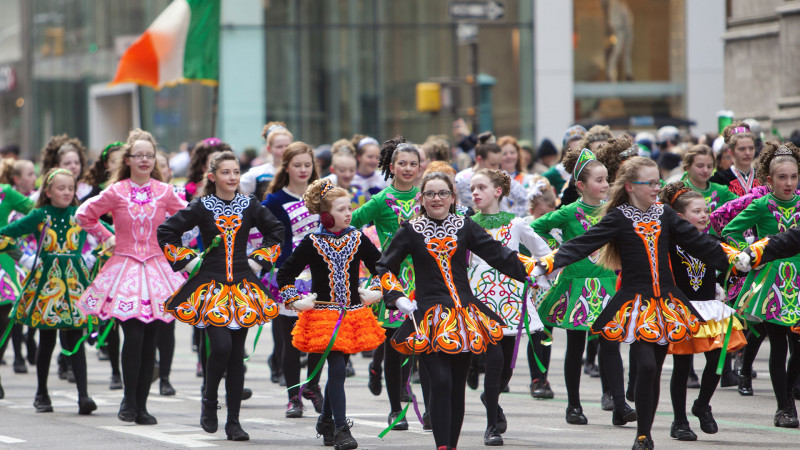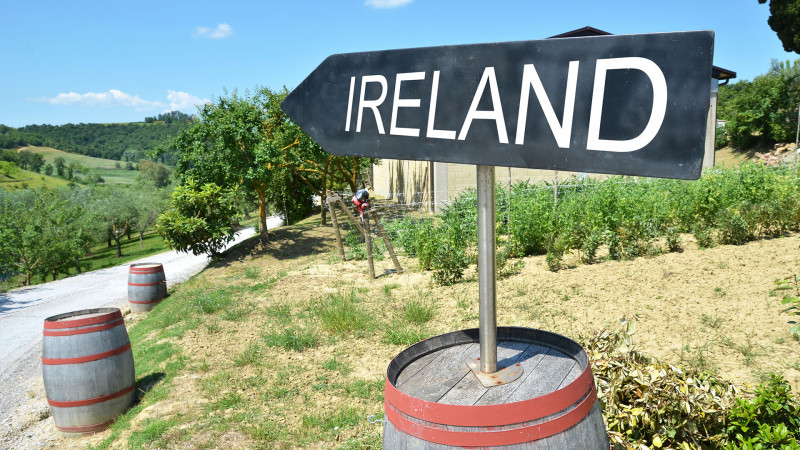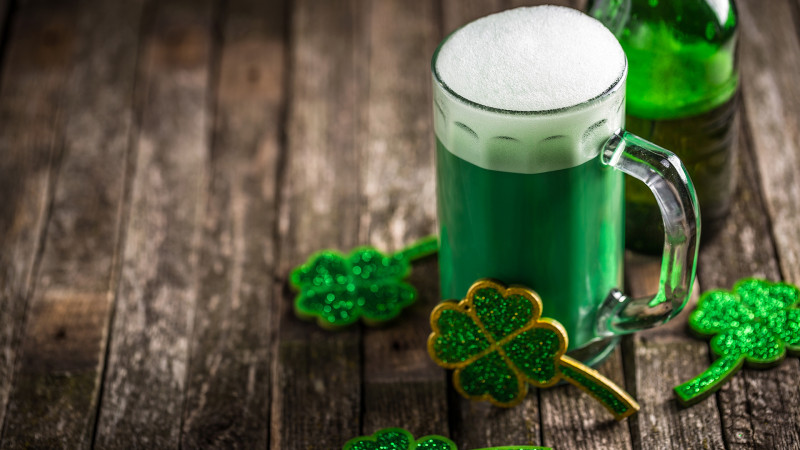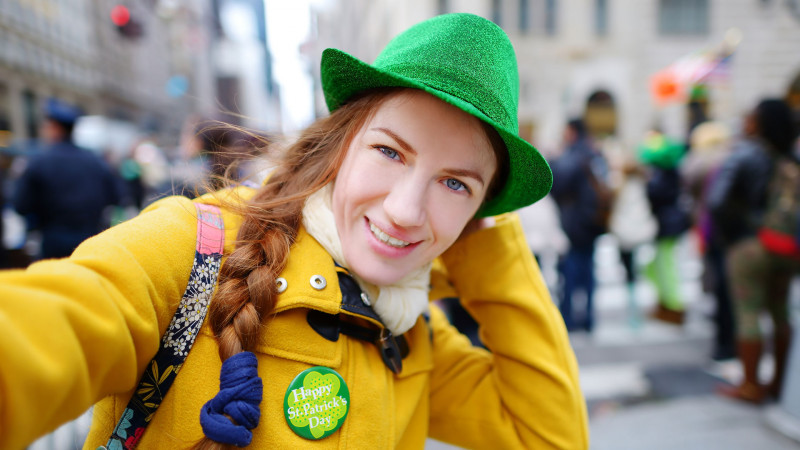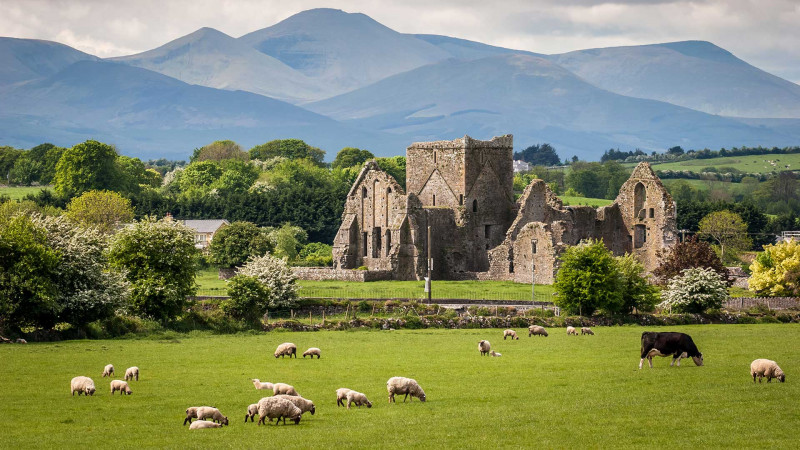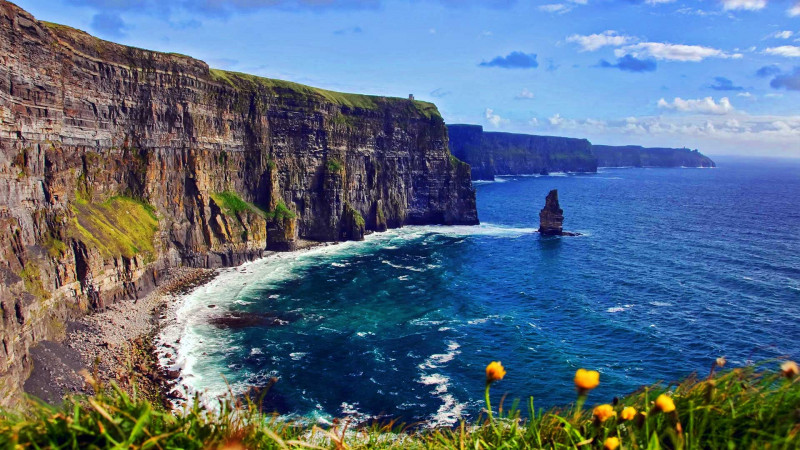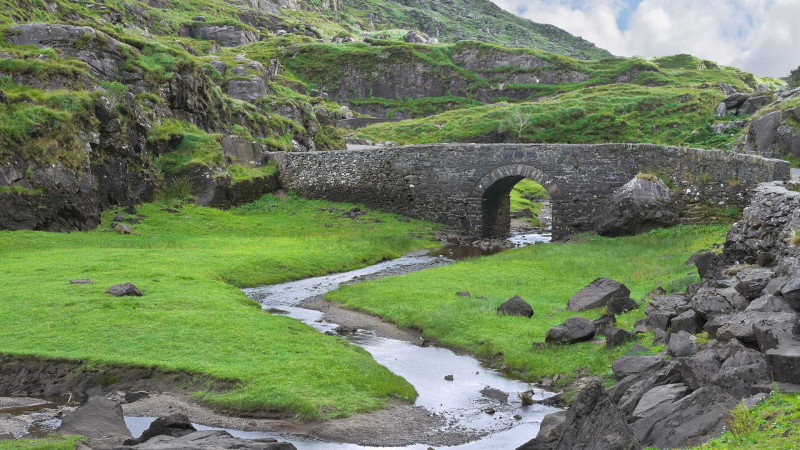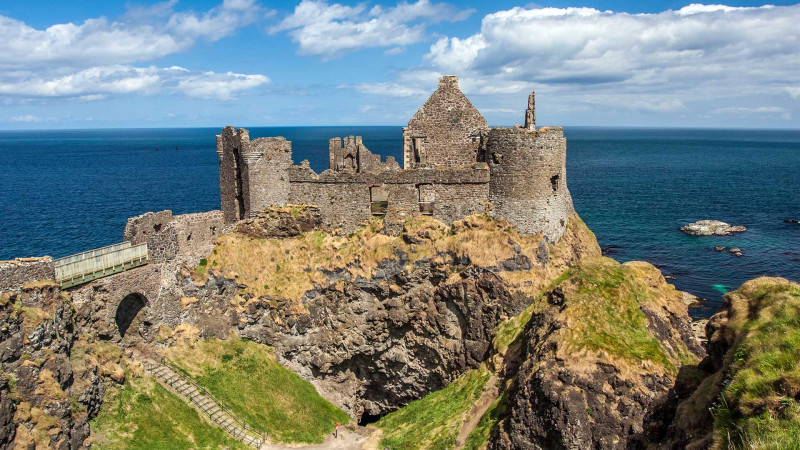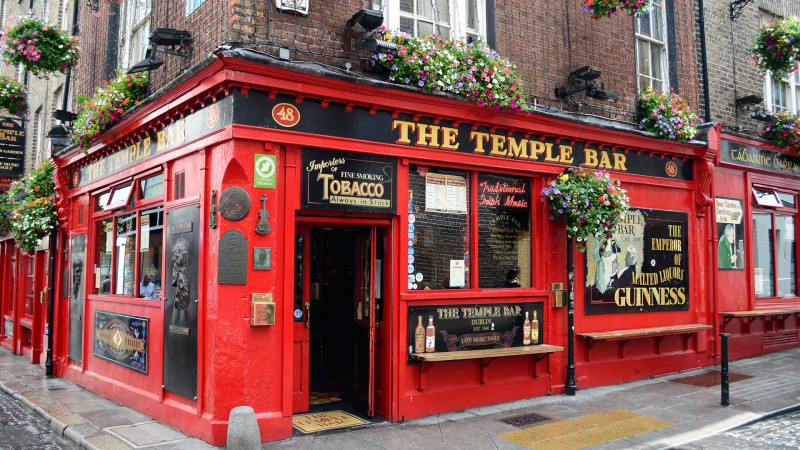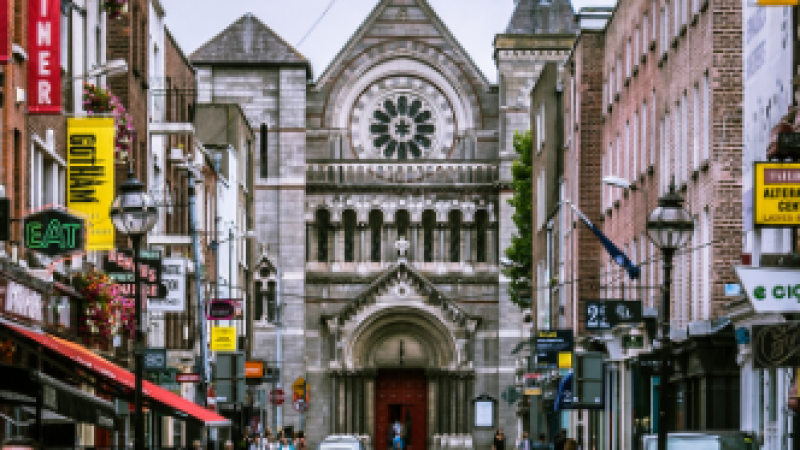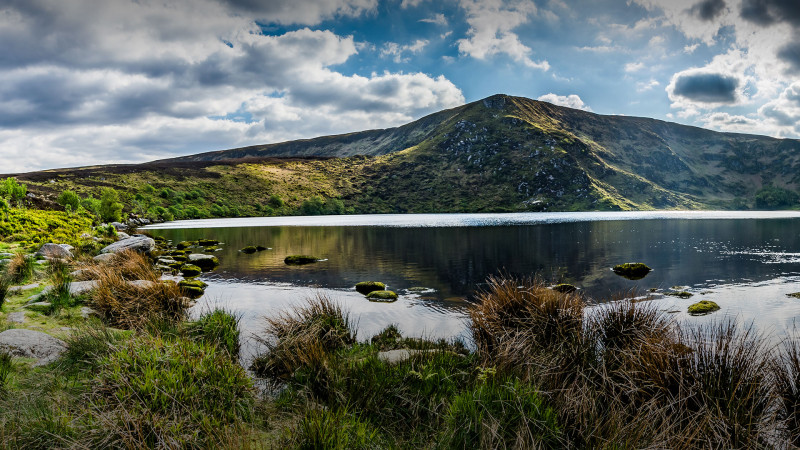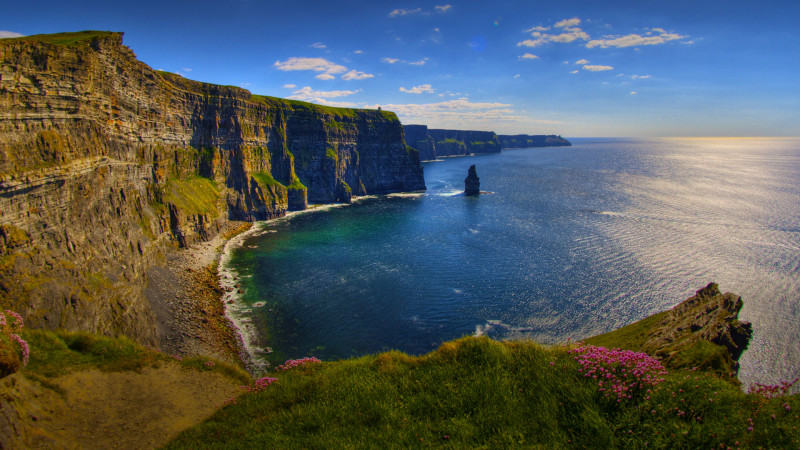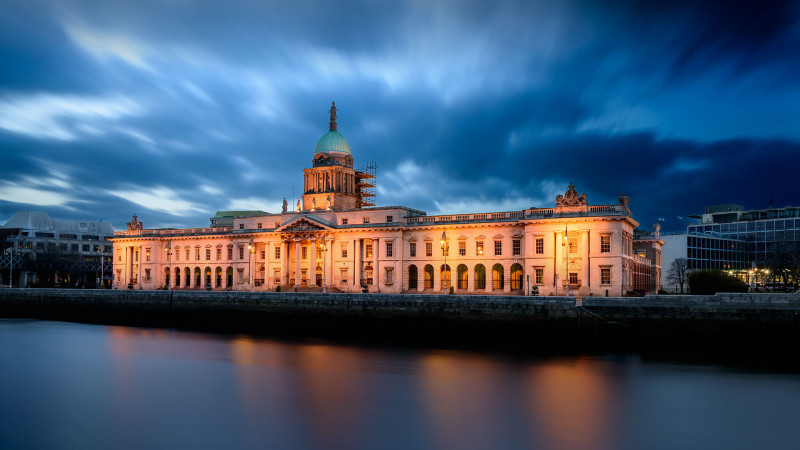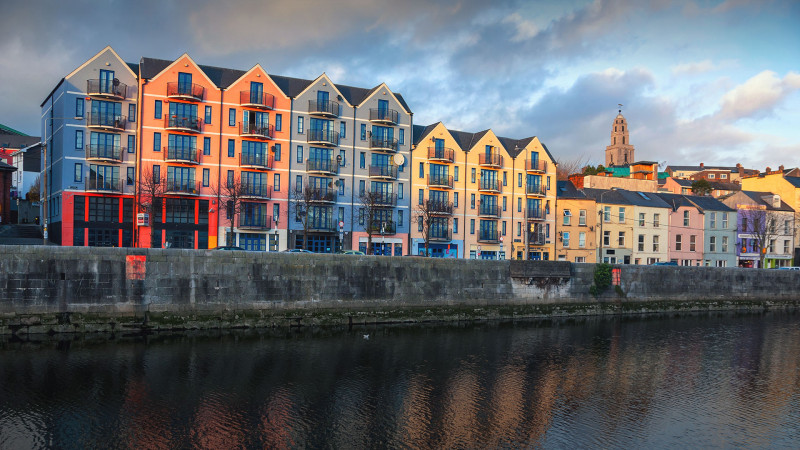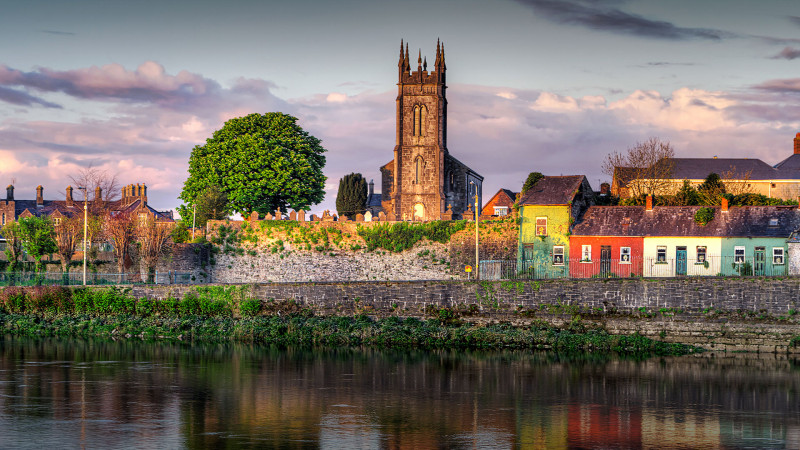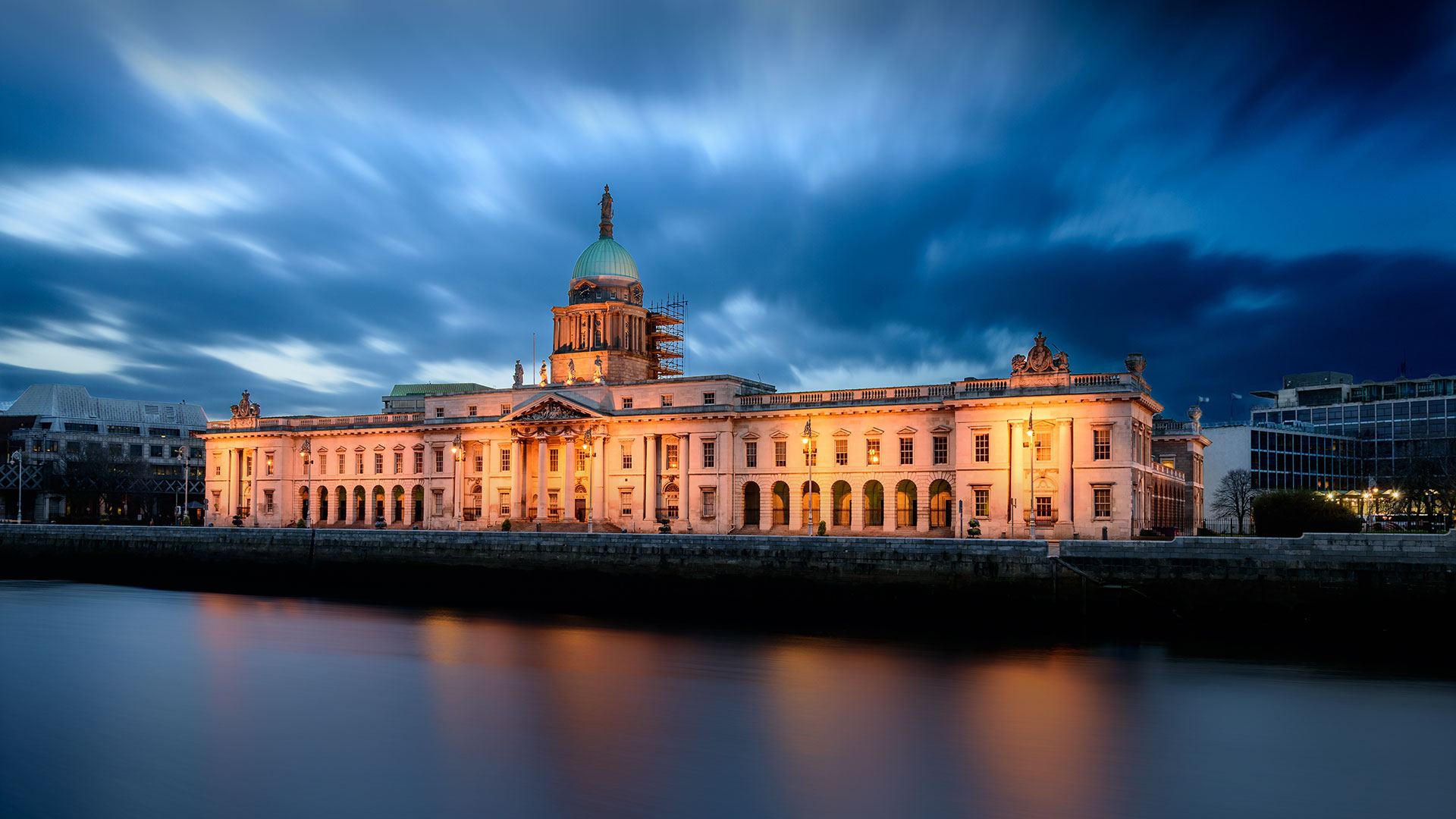
IRELAND
Snapshot
Overview
Overview
› capital:
Dublin
› idioma:
Irish language, English language (Irish is officially the first language, but English is the spoken language)
› fundacao:
The Irish Free State, with jurisdiction over 26 of the 32 counties, came into existence in December 1922. Ireland became a Republic on April 18, 1949.
› populacao:
4,761,865 million people (Irish census from April 2016)
› area:
70,280 km² (117th largest country in the world)
› fuso_horario:
2 to 4 hours ahead of Brasilia/Brazil time, depending on the time of the year.
** What about during Daylight Savings Time? Daylight savings time in Ireland goes from the last Sunday of March until the last Sunday of October. In late October Brazil goes into daylight saving time, advancing the Brazilian clocks by 1 hour, so the difference decreases to 3 hours. As in much of this period (March to October) Brazil is at its traditional time, so for most of the year the Brazil-Ireland time difference is 4 hours. In contrast, when daylight savings time is in effect only in Brazil, the difference falls to only 2 hours.
› moeda:
Euro (€)
› mao_de_transito:
Left side of the road
› voltagem:
The standard domestic electricity supply in Ireland is 230 volts AC (frequency 50Hz).
› custo_de_vida:
Annual estimate for a student: between €7,000 and €15,000
› sistema_politico:
Parliamentary Republic
› inflacao:
0.4% (2017)
› desemprego:
6.4% (2017)
› idh:
Ranking in 2016: 8th best country in the UN (United nations) human development ranking. Score: 0,923 (the closer to 1, the better the rating).
› pib:
USD 297 billion (2017)
› indice_liberdade_economica:
Ranking: 6th Place: 80.4 (2018)
› indice_melhor_pais_para_viver:
(Organisation for Economic Co-operation and Development - OECD) (2017 Social Progress Index) Ranking: 11th (2017)
https://www.socialprogressindex.com/?code=IRL
› religiao:
Christianity is the largest religion in the Republic of Ireland, based on the number of baptisms. In Irish Christianity the Roman Catholic Church predominates, with its followers representing 84.2% of the population. There are Protestant minorities, which together make up approximately 5% of the population, being the majority (2.8%) from the Church of Ireland, of the Anglican Communion.
Climate
Climate
Ireland's climate is mostly influenced by the Atlantic Ocean, which justifies mild temperatures most of the time, with rare records of extreme heat or cold, but with heavy rainfall in some regions. A strong warm ocean current called North Atlantic Current keeps the sea temperatures equally pleasant. The hills and mountains, especially around the coast, protect the island from the ocean’s strong winds.
In spring (February to April), the average of the highest temperatures remains between 8° and 12° C. In the summer (from May to July), the highest average temperatures range from 18 °C to 20 °C.
During summer, between July and August, the country gets 18 hours of sunlight and night falls only after 11 pm.
In the fall (August to October) thermometers reach between 18 °C and 14 °C, with September being considered one of the mildest and temperate months. In winter, indoor air temperatures usually reach 8 °C, and the coldest months are January and February. The temperature intermittently reaches negative values and, with the exception of a few snowfalls, snow is rare.
While there is no perfect time to visit Ireland, summer attracts more visitors who enjoy sunny afternoons, flowered parks and outdoor dining at the island's cafes and restaurants. And of course, in summer there is a festival in every corner of the cities.
Economy
Economy
During the early 2000s, Ireland experienced major economic fluctuations. Known as the "Celtic tiger" because of its high rate of economic growth, Ireland has gone from financial disaster to economic boom in a short time.
This boom was due to the good phase of the real estate market in the early 2000s, which retracted dramatically in 2008. Real estate prices fell between 50% and 60% and risky loans - especially in the form of credit to real estate developers - accumulated in the portfolio of major banks.
From 2015, however, after investing in education and encouraging small and medium-sized companies to create innovative products, the country has again recorded astonishing growth rates, with GDP of over 250 billion euros that year. Today it is a global technology center that received a lot of foreign capital investment, as it has attracted multinational giants such as Google, Microsoft, Intel, IBM and the pharmaceutical Pfizer - all keen to hire skilled labor to grab part of the results of the satisfactory indices that Ireland has achieved as one of the fastest growing European countries.
Government & Politics
Government & Politics
The government of Ireland is governed by a parliamentary republic which has the president as its highest authority. European developed country, ranking 8th in the Human Development Index, besides also being highly rated in terms of political, economic, and press freedom and the degree of which democratic measures are applied.
History
History
The present Parliamentary Republic of Ireland still holds what remains of the Celts, one of the richest civilizations of the ancient world, responsible for introducing iron and metallurgy handling on the European continent. Whether after a stroll through the sumptuous Irish castles, an almost untouched heritage from the medieval period, or walking around the city and shopping for typical products, you can identify the symbols and artifacts of their culture, which has enhanced the rich history of the Emerald Isle. There are heavy doses of mysticism and religiosity on the Celtic Cross, for example, which symbolizes fertility and prosperity - and also on the tree of life, which represents the spiritual world, the well-being and integrity of the villages. Each tree represented a different meaning, of protection, imagination or wisdom.
In the early 18th century, the kingdoms of Great Britain and Ireland were merged into the United Kingdom of Great Britain and Ireland. In 1916, however, the Irish organized themselves in central Dublin for what would later be called the Easter Uprising, the most devastating rebellion in Irish history against the British rule. It was six years of struggle that culminated in the independence of part of the island in 1922. Northern Ireland is the only part of the territory that remains under United Kingdom custody.
Flora & Fauna
Flora & Fauna
Grass and heather cover most of the country surrounded by hills and plains. Nearly half of Europe's mosses grow here, and, uniquely, flowering plants from places as far apart as the Iberian Peninsula, the Arctic and even North America all coexist in harmony. This means that at any time of the year, the countryside shines with its flora, from the bright yellow Wicklow gorse to the lively fuchsia hues in West Cork and the hawthorn and gorse of the Glens of Antrim. Flowers diversify the colors of the Irish landscape, but it’s the green (always the green!) that strikes the eye. Not only because of the three-leaf clovers or the other symbols that spread good luck and sympathy from these people - but because their vegetation honors their code name: Emerald Island.
Amid the flat land, the Cliffs of Moher, which is 8km long and over 200m high, appear as a postcard, with a tower overlooking the Aran Islands.
The Causeway Coast in Antrim County is another region of outstanding natural beauty. Comprising 29 kilometers of coastline plus cliffs and the Giant's Causeway, a UNESCO World Heritage Site.
The area is home to some charming seabirds, including the common murre, the razorbill, the black-legged kittiwake and the Northern fulmar - and if you keep an eye out early in April, on the outskirts of Rathlin Island, you can catch the parrots that are out there playing.
Life also thrives along the shoreline, with shrimps and crabs, as well as rare plant species that include the beautiful bladder campion or maidenstears.
In addition to the diversity of marine species, with so many green pastures, the presence of horses and cattle becomes quite predictable. However, the unique characteristics of these animals on Irish soil put them in a prominent position, as is the case of small Kerry Bog Pony, originating from the county of Kerry and the Connemara Pony, one of Ireland's gifts to the world, has one of the species’ highest heights.
Experts say the only reptile that can be found in Ireland is the lizard. There are no native snakes that can frighten people over there, and the Irish credit this gift to their patron Saint Patrick, who protected his land by driving all the snakes away from the green island. However, geographers attribute the feat to the Ice Age heritage and its weather conditions, incompatible with these animals’ life. Exchange students and tourists thank Saint Patrick!
Cost of Living
Cost of Living
According to the Irish Concil for International Students the total spending of an academic year in Ireland (9 months) is estimated to range from €10,000 to €15,000, largely depending on the city and type of accommodation chosen. These estimates include rent, electricity, food, books, laundry and medicine, as well as travel passes and social expenses, but exclude tuition fees.
It’s important to emphasize that rents and much of the cost of living tend to decrease for those who choose to live outside major centers such as Dublin.
When moving to Ireland to study, we remind that you must set a budget for one-off expenses - such as buying bedding, cell phone plans, kitchen items. Besides the money to enjoy international trips planned during the year.
Accommodation
Hostels starting from €270 euros per week
Shared rent (room) €400 per month
Homestay €300 – €700 per week
Rent (property) €900 per month
Other costs
Food (supermarket and eating out) €70 - €100 per week
Phone and internet - starting from €25 per month with local mobile operators
Gas and electricity - €120 monthly
Public Transportation €30 - €50 per week
Leisure - on average €30 - €80 per week
Public Transport
Public Transport
Although not the only way to travel around the island, all available public transport travels on land. Whether by bus, train, boat or ferry, the great advantage they have in common is that you can contemplate the beautiful landscape along the way.
To save money, the tip is to use the Leap Card (a prepaid card that works as a local Single Ticket).
The billing system, however, is different from Brazil, where fares have the same price, regardless of the itinerary. In Ireland, this varies depending on the distance traveled.
To make billing easier, the bus routes, Luas (a tram system) and Dart (metropolitan trains) are divided into zones. Thus, the fewer regions, the lower the fare paid by the passenger.
Bus passengers that travel often know how high costs can be at the end of the month when not using the Leap Card. A trip from up to three regions costs 2.10 euros in cash or 1.50 in the prepaid card. For longer trips with more than thirteen regions, the amount rises to 3.30 euros in cash, or 2.60 using the card. The same prices apply to students*.
You can also take advantage of over 600km of cycle paths and ride a bicycle through the cities. The use of helmets is not mandatory by law, but extremely recommended to ensure safety.
The Brazilian driver's license may be used for one year. After this period, it will be necessary to complete the process of obtaining the Irish document, which, like ours, comprises stages of the theory test, psychotechnical medical examination and driving test. Once the process is over, the challenge of practicing driving in the left-hand traffic begins!
*Updated prices from December 2017
Nós
IRELAND
Intercâmbio -no país- IRELAND
The color green may wish good luck or represent the struggle for independence, the republicanism, the Gaelic tradition and even the Catholic majority on the country's flag. The same color that’s on Saint Patrick's commemorative hats, which reinforces the mystical symbols, is the same color that permeates the pastures and landscapes surrounding Ireland's monuments and other landmarks. With such a predominance, the island that was the stage for Star Wars in the cinema, is affectionately called "Emerald Island".
The country appeals to both the most modern and cosmopolitan people - with its buzzing restaurants and pubs and the friendliness of its people - as well as those who prefer a quieter life connected to nature, its mild and humid climate and the historical and cultural preservation of its medieval castles.
Although it’s the third largest island in Europe, its territorial extension is compact if compared to other countries. While in Brazil a trip between states can take about six hours or more, in Ireland it’s possible, for the same amount of time on the road, to reach London, Belgium and Denmark, for example. To live there is to have the opportunity to realize that old backpacking dream in Europe, as it’s possible to travel several train routes, enjoying lush landscapes or, to shorten the distances even further, there are very affordable flight options to neighboring countries.
European base of operations for tech giants like Google, Facebook and Linkedin, the country has a vibrant economy and, focusing on the future, has plenty of professional opportunities to the most dedicated students. In addition, the Irish government invests heavily in education. Thanks to the International Education Scholarships program, international students can receive one-year scholarships for University graduation, master's and PhD degrees.
Informações
-
Why study in Ireland
Discover and reinvent skills, develop the resilience needed to adapt and leverage your own skills in the face of the unexpected, stimulate creativity and confidence by performing activities that would hardly be anticipated from your former comfort zone. Improving your language skills living abroad is only a consequence of these and other much broader gains in the medium and long term.
To get the most out of this experience, in addition to planning the most appropriate budget, it’s important to consider the social, climatic, and geographical characteristics of the countries so that you can choose the one that best fits your profile as a student.
Choosing Ireland as an exchange destination appeals to both the most modern and cosmopolitan people when choosing the capital Dublin - with its restaurants and pubs bustling at night - as well as those who prefer a quieter routine, enjoying the nature in its mild and humid climate and the historical and cultural preservation of its medieval castles.
The vast green areas and breathtaking natural landscapes have earned Ireland the title of Emerald, and the compact length of the country allows the students to stay close to beaches, mountains, rivers and monuments, as well as iconic historic buildings such as the Kilmainham Gaol museum in Dublin.
Still on the advantages of the local geography, living in Ireland makes it easy, practical and even inexpensive to access major European destinations on your free time.
The full scenario of landing on the green island as an exchange destination is even more exciting. European base of operations for tech giants like Google, Facebook and Linkedin, the country has a vibrant economy and, focusing on the future, has plenty of professional opportunities to the most dedicated students. In addition, the Irish government invests heavily in education thanks to the International Education Scholarships program, international students can receive one-year scholarships for University graduation, masters and PhD degrees. -
Educational system in Ireland
Ireland's Education System is the best in Europe and one of the best in the world according to the latest OECD (Organization for Economic Co-operation and Development) survey.
Trinity College Dublin, an Irish educational institution, was founded in 1592. The data reinforces the historical importance that education has in the country. Thus, it’s easy to deduce why more than 35,000 foreign students from at least 161 nations come there annually to improve their knowledge, from learning English to postgraduate studies at renowned local universities.
The visa that allows to both study and work is the Stamp 2 and since 2015 it became valid for eight months. Students can renew the document and stay up to three years studying English.Official qualification system – NFQ
NFQ is the official education system that ranks the academic value of Irish education frameworks. The NFQ education system is divided into 10 levels that rank the academic value of the qualification obtained in a study program.
The levels are incremental and each has a specific qualification. The passage from one level to another provides an academic evolution.
All qualifications recognized through this system are quality assured, meaning the student can be confident that the course and educational institution are constantly reviewed to ensure high standards and constant quality.
The levels are based on knowledge, skill and competency standards. It also links certifications from national educational recognition bodies such as: QQI, State Examinations Commission, FETAC, HETAC, IOT and some universities.Ireland's educational system compared to Brazil's
It’s not possible to exactly compare the Brazilian system with the Educational System of Ireland. But for a better understanding, here is a brief and approximate comparison of the education levels in the Irish Educational System with Brazilian education (from high school):
Level 5 – Certificate
Equivalent to high school in Brazil
Level 6 – Advanced Certificate & Higher Certificate
Equivalent to technical courses in Brazil. Courses usually have a duration of 1 or 2 years. They are offered at technology institutes and specialized colleges
Level 7 – Ordinary Bachelor Degree
Equivalent to a bachelor degree in Brazil. The level 7 bachelor's degree is “ordinary”, ie a regular degree. The courses usually have a duration of 3 years and are offered by universities or colleges
Level 8 – Honours Bacharelor Degree & Higher Diploma
The Honours Bachelor's Degree is equivalent to a bachelor degree in Brazil. The level 8 bachelor's degree is a graduation with honours, since it includes a project. The courses usually have a duration of 3 to 4 years and are offered by universities or colleges
The Higher Diploma is equivalent to postgraduate studies in Brazil and intended for graduated students. The courses usually have a duration of 1 year and are offered by universities or colleges.Level 9 – Master’s Degree & Post-Graduate Diploma
Equivalent to a Master's degree in Brazil. The courses usually have a duration of 1 to 2 years and are offered by universities or colleges
Level 10 – Doctoral Degree & Higher Doctorate
Equivalent to a Doctorate degree in Brazil. The courses usually have a duration of 3 to 4 years and are offered by universities.
-
About Ireland
Located in western Europe, west of Great Britain, the Irish territory has an area of over 70,000 m2, corresponding to 5/6 of the Ireland island. The other part is home to Northern Ireland, an independent country that belongs to the UK.
Unlike state division, as we see in Brazil, Ireland is divided into four historic provinces (Leinster, Munster, Connacht and Ulster). Each is subdivided into counties, totaling 26 and the main one is the capital Dublin.
Despite being the 3rd largest island in Europe, their territorial extension is compact when compared to other countries. While in Brazil a trip between states can take about six hours, as is the case of Rio-Sao Paulo route, in Ireland it’s possible, with that same amount of time on the road, to reach London, Belgium and Denmark, for example. Living in Ireland means having the opportunity to make that old backpacking dream come true in Europe, as it’s possible to travel several train routes, enjoy lush landscapes or, to further shorten distances, there are very affordable flight options to neighboring countries. -
Irish Culture
Ireland values historical preservation and all its influence on Celtic magic - and its wishes of good luck -, Viking and medieval. Just take a stroll through the natural history and archeology museums (National Museum of Ireland) or the Kilmainham Gaol (former Irish prison), libraries and castles to immerse yourself in a true cultural show.
But it’s in the pubs that we feel the vibe of sympathy and energy of the Irish people. This is where friends meet to catch up from the most unpretentious chat to the big celebrations and commemorations. And then, it’s in the almost untouched architecture of the pubs that history once again strikes the eyes of visitors, who has access to the Guinness beer history that blends with the roots of the local people.
In the music department, Emerald Island is the birthplace of Bono Vox and other members of U2, the soft voice of Enya and Demien Rice, who became world renowned for the theme song of the movie "Closer”, "The Blower's Daughter" and the bands Cranberries and The Coors.
If you plan to pack your bags for the land of goblins and fairies, to get in the mood and check out some landscapes beforehand, check out “In the name of the father” - classic Irish box office hit in the early 1990's - The Wind that Shakes the Barley (2006) - which portrays old wartime Ireland from the 1920s - plus the latest novel “P.S. I love you".
In 2015, Skellig Michael Island, located about 15 km from the Iveragh Peninsula in southwest Ireland, hosted one of the Star Wars films “The Force Awakens”. -
Tourism in Ireland
With tourist attractions that bring together very unique natural diversity and cultural activities offer an almost untouched retrospective of medieval and Viking history, it’s no surprise that Ireland receives about eight million visitors annually. The island pleases both metropolitan people with the bustle of its iconic pubs, which trace the history of the famous beer and host the numerous celebrations of one of Europe's most festive and high-spirited people. On the other hand, people can also enjoy their villages surrounded by the predominant green that encircle their lakes, rivers and beaches. And the cult people can enjoy visits to museums, libraries, castles, in a true historical and cultural immersion.
1. Cliffs of Moher - 8 km long cliffs that are over 200 m high, overlooking the Aran Islands
2. Guinness Storehouse – brewery experience that tells the story of the famous Irish beer complete with tasting and rooftop bar
3. Dingle Peninsula - the westernmost point of the Irish Territory is located in County Kerry
4. Temple Bar – pubs and restaurants area in Dublin
5. Blarney Castle - Medieval Era Heritage located 8 km from Cork
6. Powerscourt House – Palace surrounded by landscaped gardens in Wicklow County
7. Saint Patrick's Cathedral - another historical fountain from the medieval period offers daily recitals to its visitors
8. Skellig Michael – island adjacent to Ireland, where there is a monastery considered a World Heritage Site. The site hosted Star Wars recordings
9. Dublinia - Interactive exhibition that invities its visitors to a trip to Dublin in the Middle Ages and Viking Era. -
How to apply for an Irish visa
Unlike other countries such as Australia, for example, where you need to apply for a study visa while still in Brazil, in Ireland students apply for the visa when they arrive in the country. However, some consideration must be taken for your arrival at the airport.
When the student lands in Ireland, they must have a letter from the school confirming enrollment in a course, return airfare ticket and accommodation details. The documents will be reviewed by an immigration officer who will give the student a provisional visa which can range from 30 to 90 days.
For courses shorter than 12 weeks this authorization is sufficient, but for courses longer than 12 weeks the student must go to the immigration general office to apply for the Irish Residence Permit (IRP), which costs € 300 euros. This must be done within 90 days of the student's arrival in the country.
Among the documents that will be requested is the original letter from the school (mentioning that the course has a minimum load of 15h per week), government health insurance and financial proof of €3,000 euros.
For more information on the visa application process please consult your nearest WEST 1 office!

